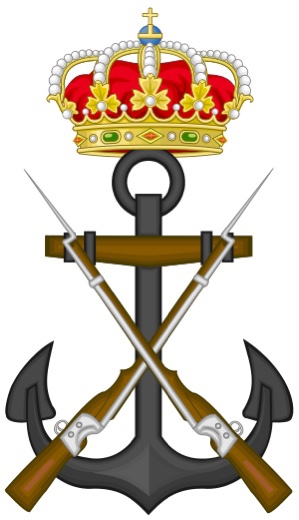
Longtime reader Jorge, from tirotactico.net asked us to give a shout out to the Spanish Marine Corps, the oldest Marine Corps in the world!
Happy Birthday!

Longtime reader Jorge, from tirotactico.net asked us to give a shout out to the Spanish Marine Corps, the oldest Marine Corps in the world!
Happy Birthday!
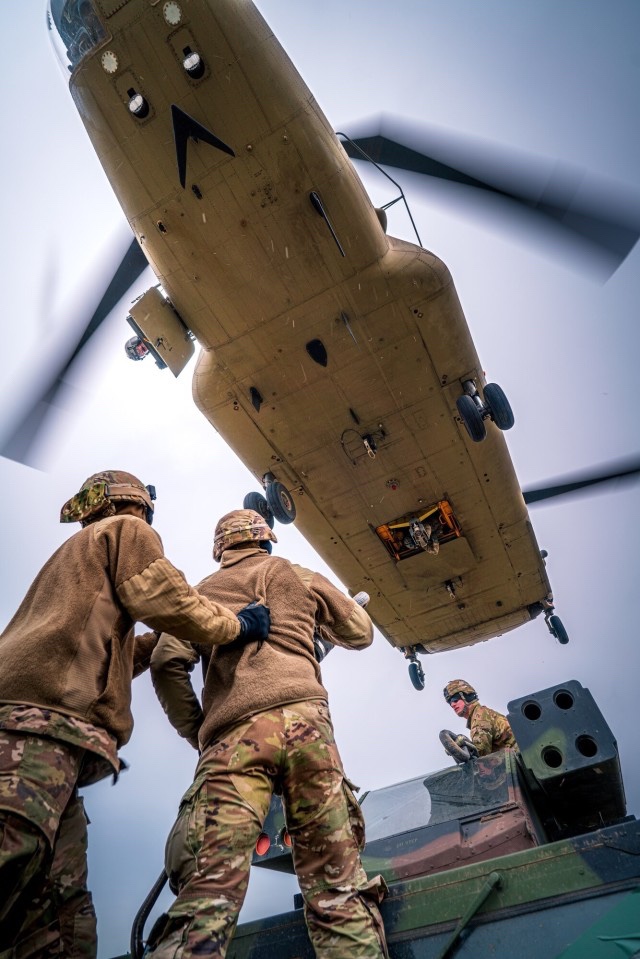
ROMANIA — U.S. Army air defenders from Charlie Battery, 5th Battalion, 4th Air Defense Artillery Regiment completed sling load training at their forward-deployed site near the Black Sea on Jan. 25, 2023. They are deployed in support of NATO’s enhanced Forward Presence Battle Group in Romania.
“Having our Soldiers train on sling load operations not only provides the commander some flexible employment options, but tactically it allows us to conduct some deep maneuver and air assault operations with the units that we are supporting,” said Capt. Nathan Jackson, the commander of Charlie Battery, 5th Battalion, 4th Air Defense Artillery Regiment.
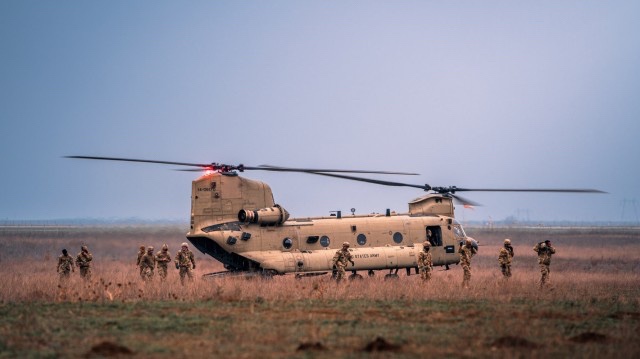
The unit practiced sling loading both the Avenger and the Sentinel A3 radar variant, which is one of the first times this has been done with the Sentinel in theater.
The Avenger weapon system is an all-terrain, all-weather air and missile defense system that is capable against rotary-wing, fixed-wing, unmanned aircraft and cruise missiles while the Sentinel A3 provides early warning detection and identification of aerial threats.
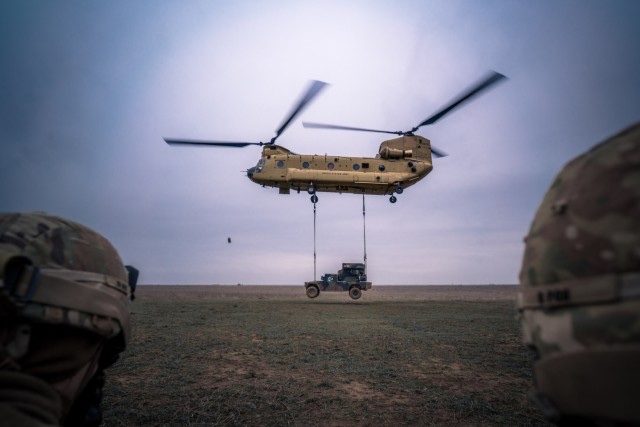
Just days after the Russian invasion of Ukraine began, Avenger short-range air defense Soldiers and equipment from 5th Battalion, 4th Air Defense Artillery Regiment deployed to Romania to help assure our NATO allies that we are committed to our obligations under Article 5, and to deter any potential acts of aggression against NATO by providing short-range air defense of allied forces. Elements of 5th Battalion, 4th Air Defense Artillery Regiment have maintained deployments in Romania, Slovakia and Poland since early 2022.
“I think it’s a great opportunity for air defense Soldiers to see this side of air assault operations, to be able to build and expand their toolkits with these capabilities. I received a lot of positive feedback from the Soldiers as this is something they don’t get to do every day, to help build these capabilities for our future operations,” said Jackson.
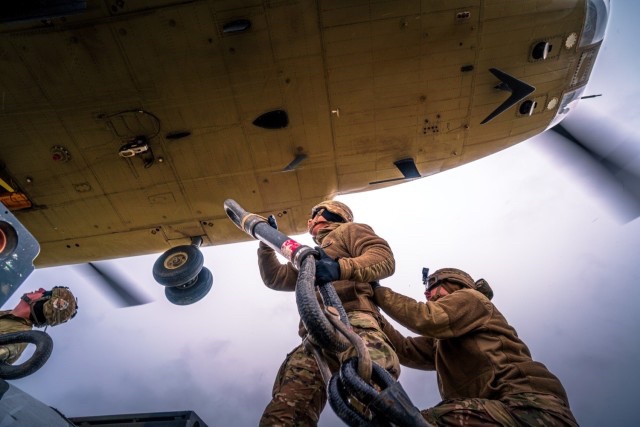
Charlie Battery was supported by a Chinook helicopter crew from Bravo Company, 2-501, Combat Aviation Brigade, 1st Armored Division, who are also deployed to Romania as part of Operation Atlantic Resolve.
U.S. Army Europe and Africa has led the Department of Defense’s Atlantic Resolve land efforts by rotating units from CONUS to Europe since April 2014. There are four types of U.S. Army Atlantic Resolve rotations — armored, aviation, sustainment task force, and division headquarters. Rotational units conduct bilateral, joint and multinational training events across more than a dozen countries. Atlantic Resolve is funded by the European Deterrence Initiative, which enables the U.S. to enhance deterrence, increase readiness and support NATO.
By MAJ Robert Fellingham
CAMP PENDLETON, Calif. —
The 3rd Marine Aircraft Wing activated a new air defense battery on November 18, 2022, as part of its ongoing efforts to modernize its existing ground-based air defense capabilities to continue responsibly modernizing the force.
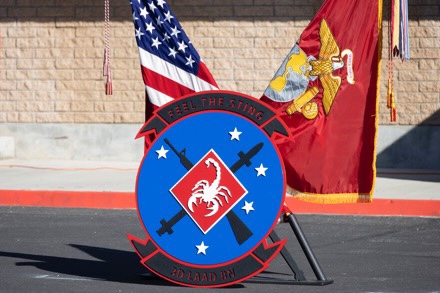
Charlie Battery, which belongs to 3rd Low Altitude Air Defense Battalion, Marine Air Control Group 38, increases 3rd MAW’s ground-based air defense weapon systems and capabilities. The activation demonstrates the Marine Corps’ investment in growing the ground-based air defense community.
“The Charlie Battery activation is another piece to the pie of modernizing the force to meet future threats.”
-Maj. Crispus M. Kimani, operations officer for 3rd LAAD Battalion
The unit’s activation sets the foundation for the arrival of Marine Air Defense Integrated System Increment 1 to the battalion. This system modernizes the existing ground-based air defense capabilities by mounting a mix of legacy and emerging technologies and capabilities onto the Joint Light Tactical Vehicle. The new capabilities will help the unit mitigate the threat from unmanned aerial systems, fixed, and rotary-wing aircraft.
Once fully equipped, the new unit will have the MADIS, FIM-92 Stinger missiles, and a kinetic remote weapon system designed to counter adversary unmanned aerial systems. The remote weapon system, an organic RPS-62 RADAR, provides additional capabilities, including multi-function electronic warfare and significant command and control improvements.
“The Charlie Battery activation is another piece to the pie of modernizing the force to meet future threats,” said U.S. Marine Corps Maj. Crispus M. Kimani, operations officer for 3rd LAAD Battalion. “It increases air defense capacity within the Marine Expeditionary Force.”
Activating Charlie Battery and integrating new technologies, including the MADIS, enables 3rd LAAD to detect, track, identify, and defeat aerial threats. Additionally, the new capabilities will enable expeditionary counter-unmanned aerial systems operations in austere and isolated environments.
Story by 2nd Lt Andrew Baez, 3rd Marine Aircraft Wing
Photo by Cpl Sean Potter

Since 2018, the Army has fielded six purpose-built security force assistance brigades (SFABs) to advise or train with vetted foreign security forces so Army brigade combat teams could focus their training and readiness to participate in large-scale combat operations.
Most of the security force assistance (SFA) planners and practitioners interviewed for this SFA primer publication agree that the authorities to conduct SFA are inconsistent with current SFA activities conducted in several countries around the world.
A general lack of understanding on how these activities are funded has led to inefficient SFAB use. This primer explores current SFA literature to determine if the doctrine is accurate, understandable, and consistent with other doctrine or if further doctrine revisions are required.
The intent of this primer is to review how the Army provides trained and ready SFA capabilities for combatant commands’ (CCMDs’) security cooperation (SC) programs and related activities coordinated through their theater armies.
The principal audience for this primer is theater army SC planners, division and brigade leaders and staffs, and Soldiers assigned or attached as advisors to brigades that execute SFA missions or echelons above brigade accomplishing the same missions.
Read Full Document:
23-02 (703)_Security Force Assistance Primer (Nov 22) (Public).pdf [PDF – 2.3 MB]
Visit Our Website:
CALL Restricted Site
By Center for Army Lessons Learned
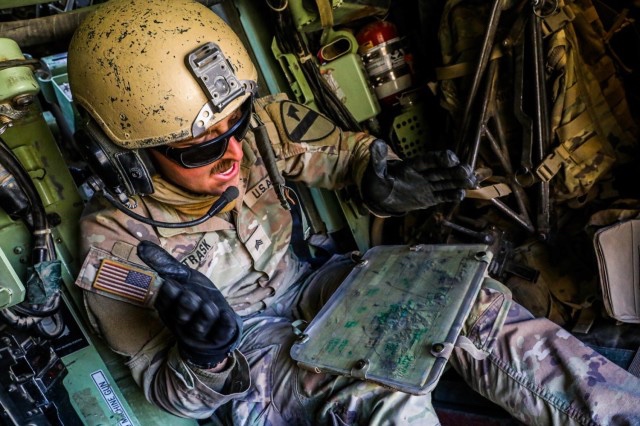
FORT IRWIN, Calif. — The 1st Cavalry Division recently participated in Project Convergence 2022 from Sep. 29 to Nov. 9 at Fort Irwin. Project Convergence is an Army-led experiment offering opportunities to access future warfighting strategies, including how the all-service and multinational force can work together to detect and defeat threats.
The First Team’s primary mission during the experiment consisted of forming attack positions each morning while moving to a landing departure zone in the M113 Tracked Armored Personnel Carrier, M1A2 SEP v3 Abrams Tank, M2A3 Bradley Fighting Vehicle, and the Joint Light Tactical Vehicle while fighting the opposing forces. Each day new technology was added to the mission to test its success and practicality when used in a lifelike scenario.
Electronic assets allowed the unit to conduct reconnaissance and bring out the enemy without endangering Troopers, preserve combat power of larger platforms, scan the battlefield in a minimal amount of time and allowed the commander to make decisions with less risk.
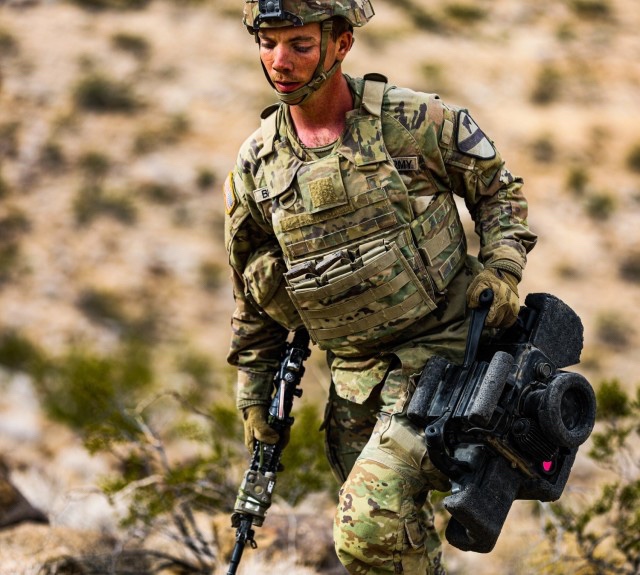
The assets also provided rapid communications with allied partners across the spectrum of operations, reducing the time needed for decision making and allowing for more rapid target engagement by the 1st Cav artillery.
The 1st Cav is transforming by integrating these new technologies across the formation to enhance their ability to compete globally, deter adversaries and win on all-domain battlefields.
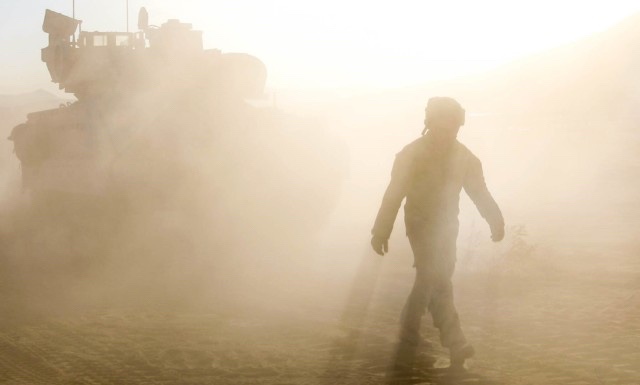
“I firmly believe that everything we do here is something that we’ll see throughout the Army over the next 60 years,” said Lt. Col. Brennan Speakes, 1st Squadron, 7th Cavalry Regiment commanding officer. “This is the equivalent of the Army moving from the horse drawn cavalry to the armored formations we know today.”
Army Futures Command established Project Convergence in 2020 as an opportunity for collaboration, experimentation and a way of informing how we fight, how we organize, the talent we need and what we fight with.
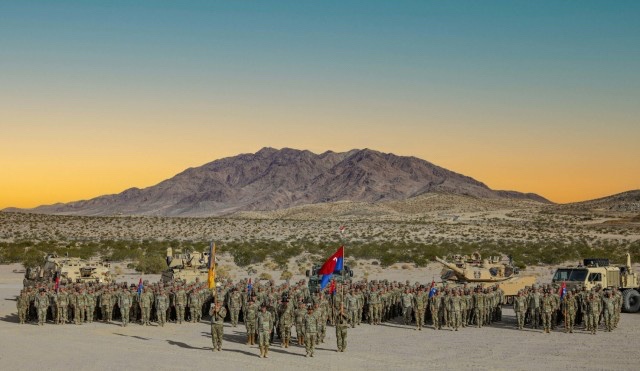
“1-7 Cav is going to be the best trained squadron in the Army by next summer,” said Maj. Gen. John B. Richardson IV, 1st Cavalry Division commanding general. “You are building an incredible reputation right now across the Army.”
Project Convergence is designed to aggressively advance and integrate the Army’s contributions to the joint and multinational force and ensure that the Army, as part of that force, can rapidly and continuously converge effects across all domains including air, land, sea, space and cyberspace, to overmatch our adversaries, increase operational tempo and generate decision advantage over our adversaries.
Convergence — the namesake of the project — refers to integrating efforts across all echelons, from the tactical to the strategic level, to deliver optimal lethal and non-lethal effects across all domains.
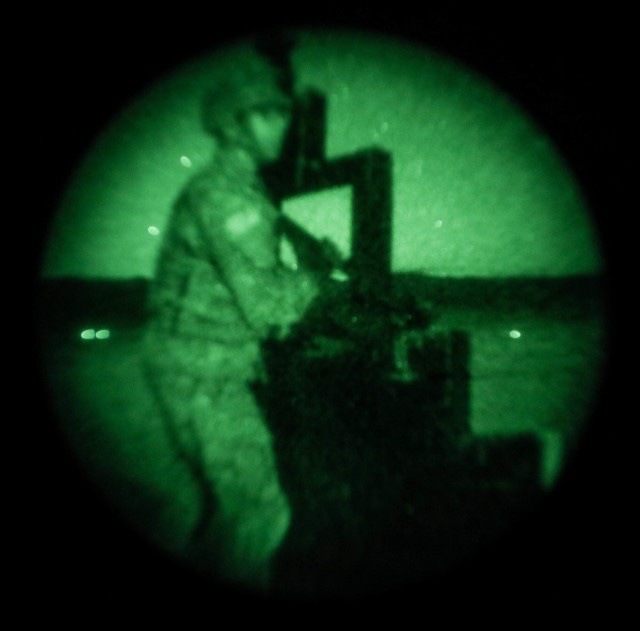
“Project Convergence 2022 is good for not only the training value for the squadron, but to learn the use and capabilities of this new technology,” said Sgt. Kyler Tackett, a Bradley gunner with 1st Squadron, 7th Cavalry Regiment, 1st Cavalry Division. “Hopefully PC22 will help with the further development of these vehicles, and to help solve problems for the future of the Army.”
Through Project Convergence, the Army is demonstrating new technologies continuously throughout the year to ensure we can fight and win as one team by framing objectives within the Joint Warfighting Concept and Joint All-Domain Command and Control network.
These experiment demonstrations and future modernization capabilities inform Army emerging technologies, future concepts and future formations.
“Hopefully we leave our mark as a contributor to future technologies that are going to help the Army fight our future wars,” said Cpt. Rannie Lintag, a human resources officer with 1st Squadron, 7th Cavalry Regiment, 1st Cavalry Division.
Looking to Project Convergence 2023 and beyond, the Army will continue to expand its alliances and demonstrate the impact modernization will have in various theaters of our geographic combatant commands.
“I couldn’t be prouder of the team that’s out here,” said Speakes. “This team is making things happen, and I’ve seen a stark improvement in not only their capabilities, but also their leadership potential.”
By SGT Brayton Daniel
CANNON AIR FORCE BASE, N.M. —
The 6th Special Operations Squadron, previously the 27th Special Operations Group Detachment 1, was officially reassigned here, Oct. 6, 2022.
The 6 SOS is an MC-130J Commando II aircraft flying unit that fulfills the 27th Special Operations Wing’s commitment to the Air Force Special Operations Command’s new deployment model.
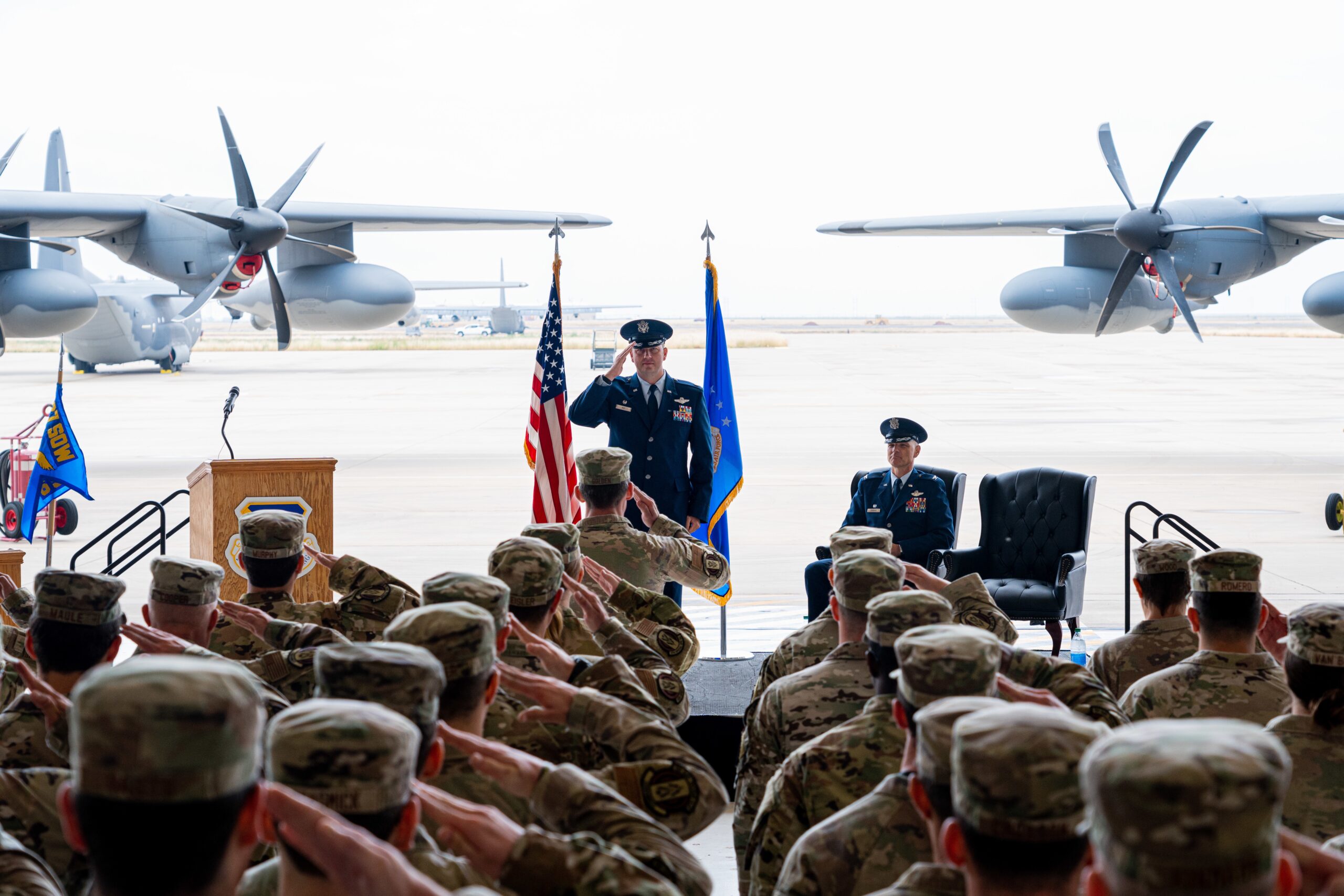
“We stood up Det. 1 in an effort to get to the AFSOC we need,” said Lt. Col. Michael Roy, 6th Special Operations Squadron commander. “Now we’ve been reassigned, we’re able to work with the Force Generation and stay fully mission capable.”
The squadron’s mission focuses on utilizing the Commando II aircraft for a variety of low-level air refueling missions for special operations aircraft. It also supports infiltration, exfiltration and resupply of special operations forces.
As a newly reassigned and relocated squadron, the 6 SOS is ready to grow and become their own established unit.
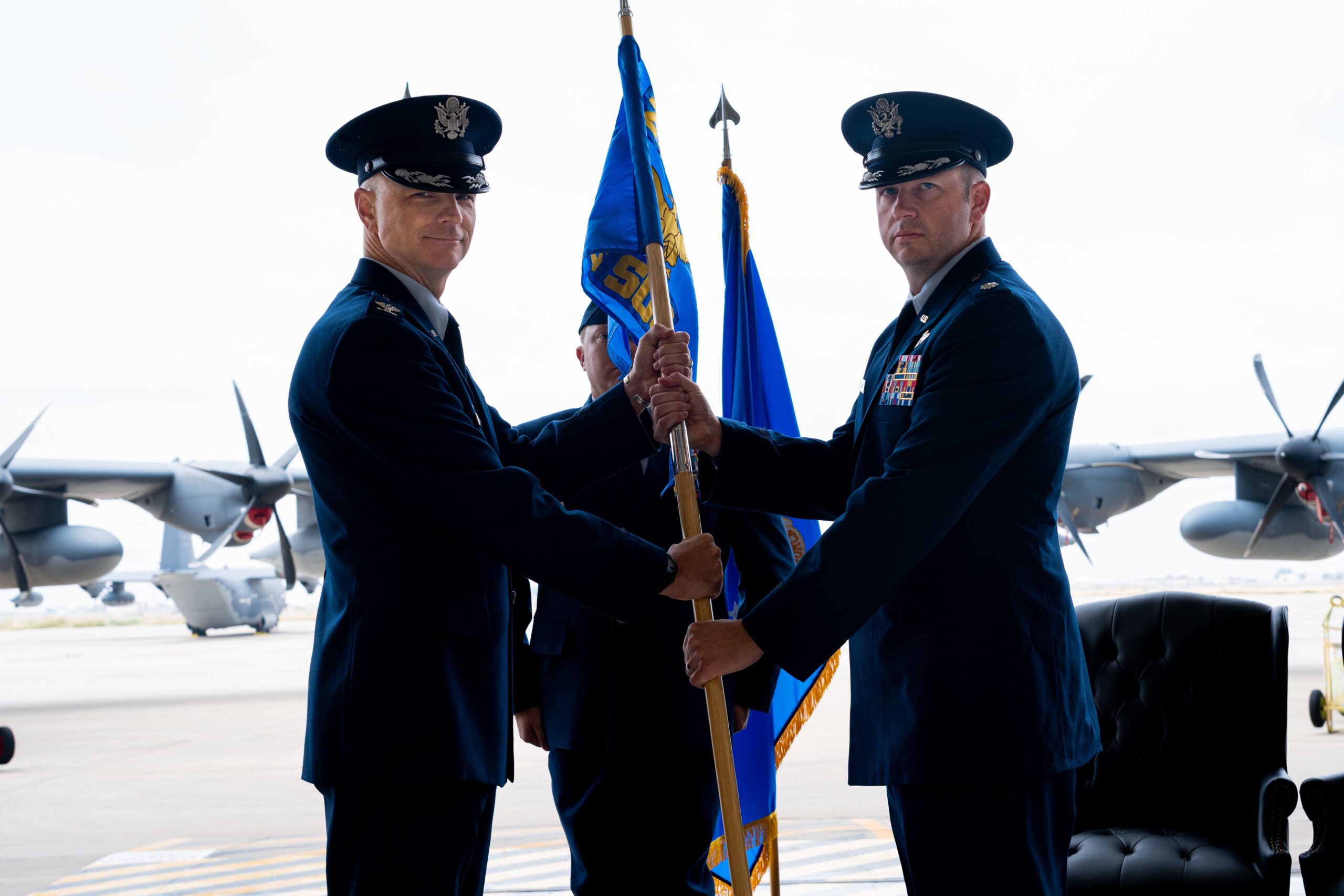
“It’s extremely humbling,” said Roy. “Being asked to command a newly relocated squadron has been exciting. We have experienced people who know what they’re doing. They’re excited about the future of forming our own heritage and culture at the 27 SOW.”
The relocation of the squadron makes it the last step in fully completing the FORGEN model. As AFSOC turns to the FORGEN model, it seeks to provide Airmen and their families the deployment and training predictability to ensure readiness, continue to develop our force, and maintain resiliency.
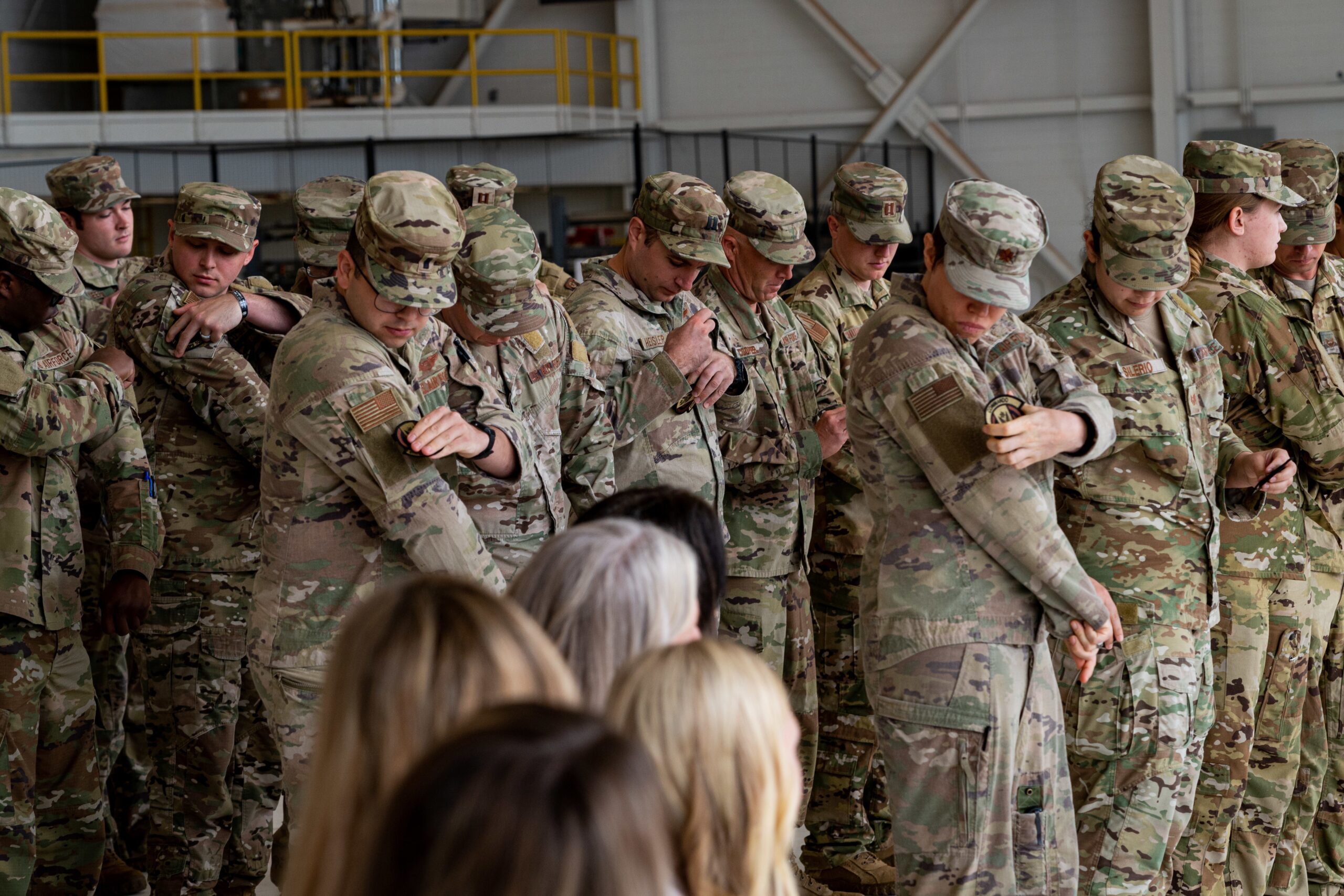
“For the past two decades, our mission has required Airmen to endure frequent, often last-minute, deployments,” said U.S. Air Force Col. Terence Taylor, 27th Special Operations Wing commander. “The Force Generation model provides an opportunity to invest equally in Airmen professional development, be more deliberate with training, and improve individual resiliency.”
By Senior Airman Vernon R. Walter III, 27th Special Operations Wing Public Affairs
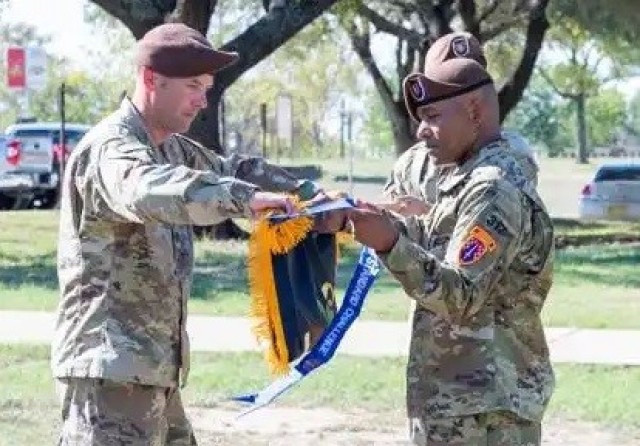
FORT HOOD, Texas – The 1st and 5th battalions of 3rd Security Force Assistance Brigade cased their colors before their upcoming deployment to United States Central Command in front of the brigade’s headquarters here, Sept. 19.
The advisors will deploy to USCENTCOM for six months. The Soldiers will advise, support, liaise and assist nations within their area of responsibility, which includes 21 different countries. The goal is to support and assist allies in the region so they can build capacity and maintain stability.
Security advisor teams increase interoperability and achieve strategic goals by providing experienced leaders from the maneuver, combat engineer, signal support, intelligence, medical and logistics career fields.
“The advisors, of Force Package 23-1 are about as ready as it could possibly be,” said Col. Zachary Miller 3rd SFAB commander. “They’ve trained intensively on individual and collective skills that make them ready to partner in any environment. They built teams where everyone looks out for each other and pushes their fellow advisors to be their best.”
In his remarks to the Soldiers and families gathered for the ceremony, Miller spoke about the 3rd SFAB being a new type of formation in today’s Army and how its mission of enabling combatant commanders to accomplish theater security objectives by training, advising, assisting, accompanying, and enabling allied and partnered security forces. Miller explained that the unit provides an essential capability for the Army and fills a critical need in today’s operational environment.
“Our advisors’ presence matters in Iraq because we are enabling the Iraqi security forces to contain and defeat ISIS without external assistance,” Miller said. “We deter Iran … (which has) for more than 40 years, aggressively supported terrorism or terrorist organizations,” Miller said. “Our advisor’s presence matters, because it helps deter Iran and its proxies from continuing activities that destabilize not only that region, but global security and commerce.”
With advisors already deployed and present in theater, this force-package deployment of SFAB teams to the CENTCOM area is significant because it will be the first time this many advisors will deploy to the region, Lt. Col. Patrick Caukin, 1st Bn., 3rd SFAB commander, said.
“This is our first deployment as a dual battalion headquarter package with the 1st Battalion and 5th Battalion going out as a team to CENTCOM,” Caukin said. “You know, the teams that are over there, 3rd Squadron, they’ve really set the tone, and the groundwork for us to come in and continue the advising efforts to broaden the U.S. is mission there.”
Miller finished his speech with a quote from Secretary of Defense Lloyd J. Austin III, who said, “Presence buys you influence, which is built on trust. You can’t surge trust.”
By Eric Franklin, Fort Hood Public Affairs
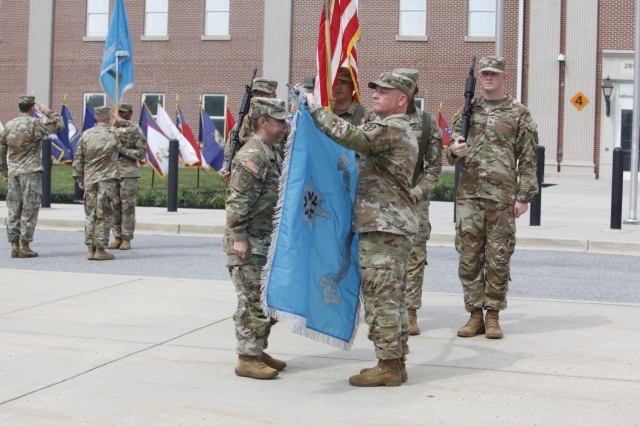
FORT MEADE, Md. — The U.S. Army recently celebrated the activation of the new Army Counterintelligence Command with a ceremony at the command’s headquarters on July 28, 2022.
The command’s activation, directed by Army senior leadership to ensure Army counterintelligence is aligned with protecting Army and Department of Defense modernization efforts, resulted in the inactivation of the 902nd Military Intelligence Group in a ceremony held earlier that day.
Officiated by Maj. Gen. Michele H. Bredenkamp, commanding general, U.S. Army Intelligence and Security Command, the Army Counterintelligence Command, or ACIC, replaced the 902nd MI Group as an INSCOM major subordinate command.
The ceremonies highlighted an important moment in Army and INSCOM history, honoring the lineage of the 902nd MI Group and the massive undertaking to transform Army Counterintelligence, and celebrating the significance of the new command.
During the assumption of command ceremony, Bredenkamp passed the colors to Brig. Gen. Rhett R. Cox, charging him with the responsibility as the ACIC’s first commanding general.
Cox began his 29-year career at the Virginia Military Institute where he commissioned in the U.S. Army Military Intelligence Corps. Cox led blended teams of service members and civilians at the tactical, operational and strategic levels during assignments to South Korea, 10th Mountain Division, the 513th MI Brigade, the 704th MI Brigade, Fort Huachuca, the Pentagon, the Defense Intelligence Agency and NATO Allied Land Command in Izmir, Turkey.
During his remarks, Cox spoke of the Army special agents who carry the ACIC shield every day.
“To the members of the former 902nd MI Group, your legacy will not be forgotten. We will continue to build this command on the foundation you have built,” Cox said. “Today’s military environment is defined by rapid technological change and intense strategic competition from our adversaries. We must do our part to ensure we are competing, imposing costs and shake our enemy’s belief that they can operate uncontested.”
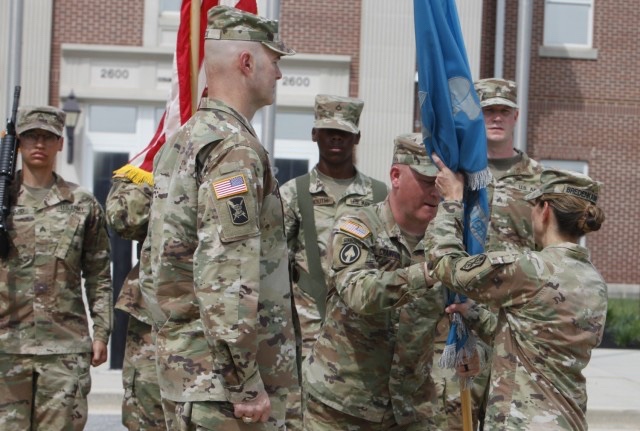
Since the Army’s decision to initiate counterintelligence reform and stand up the ACIC, the command has established critical partnerships, increased operational capacity, and postured the organization to further protect the Army’s strategic advantage. The ACIC’s core mission is to conduct worldwide counterintelligence activities to detect, identify, neutralize and exploit foreign intelligence, international terrorists, insider threats and other foreign adversaries in order to protect the U.S. Army and DoD strategic advantage.
The ACIC is a trusted Army asset capable of defeating current and emerging threats across all domains, supporting U.S. Army overmatch in any operating environment. The ACIC’s motto is: “Protect the Force, Exploit the Enemy, Vigilant Always, Army Strong!”
Last commanded by Col. Maria C. Borbon, who participated in its inactivation ceremony, the 902nd MI Group, then known as the Counterintelligence Corps, was first activated on Nov. 23, 1944.
On June 30, 1974, the unit was reassigned to the U.S. Army Intelligence Agency and given a new mission of providing counterintelligence coverage to the eastern part of the United States. In 1977, the unit was part of the largest restructuring of Army Intelligence since the end of World War II. Assigned to the newly established U.S. Army Intelligence and Security Command, the 902nd was charged with bringing counterintelligence and communications security functions together in a unified mission, becoming the Army’s principal shield against the threat posed by foreign intelligence services and simultaneously protecting forces in the U.S. before deployments.
The 902nd MI Group responded to the Global War on Terrorism by further providing tactical support to the warfighter. In support of deployed forces, the unit tailored a tactical counterintelligence deployment package that gave both theater commanders and their supporting military intelligence brigades a dedicated counterintelligence capability.
The ACIC will continue the long and distinguished history of dedicated service by the thousands of counterintelligence Soldiers and civilians who have protected our Army for the past 48 years. The command is dispersed across over 73 locations in the United States and overseas and ACIC will continue to adapt and posture itself to contest our nation’s adversaries.
By Deborah J. Varga